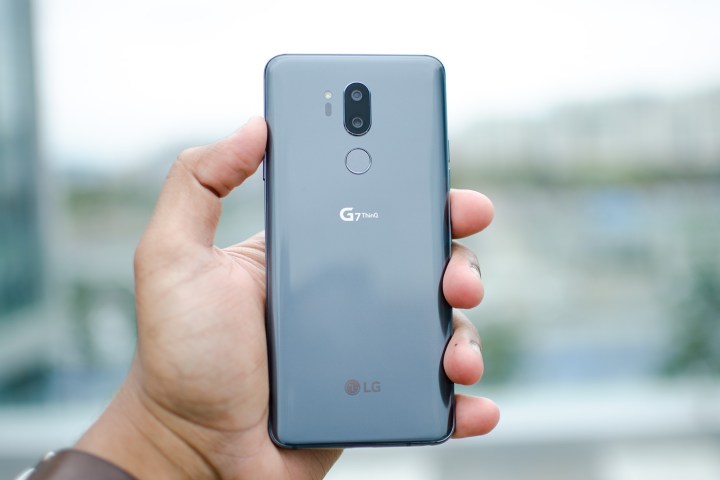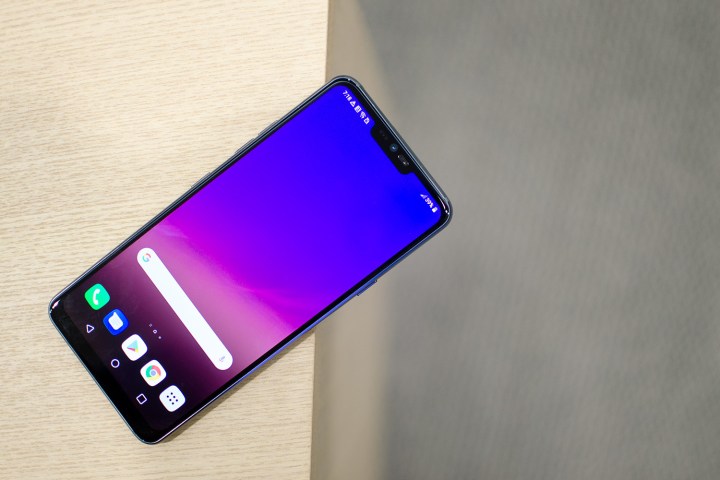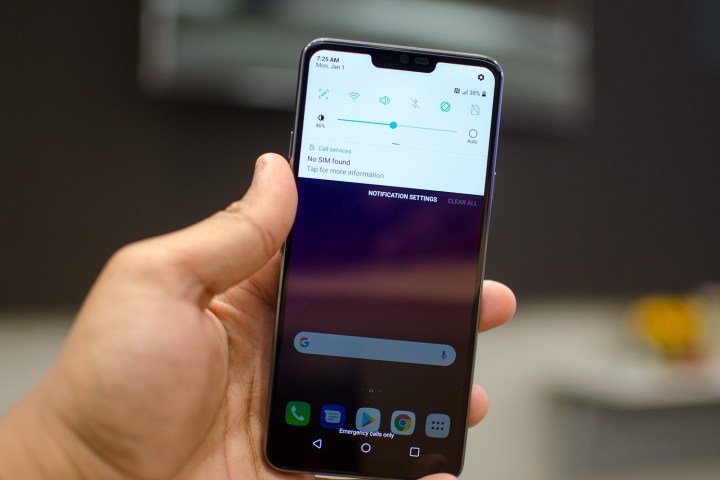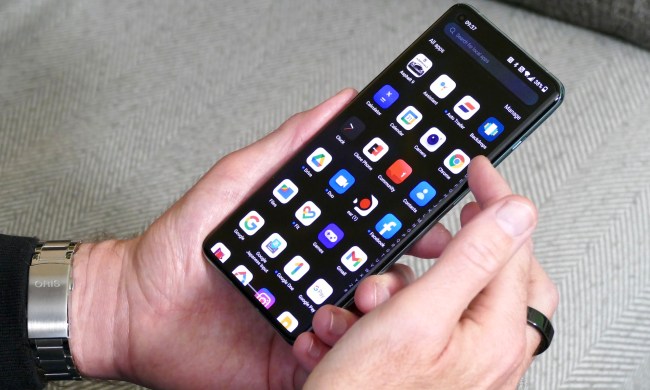
The dust has cleared — LG’s new phone is finally here, and it’s called the LG G7 ThinQ. But it’s not the only contender vying for your money in the mobile marketplace. Samsung’s mighty Galaxy S9 Plus got here first, and it’s revving up to take on the G7 ThinQ in a battle for the ages.
Which of these two titans will be left standing after this clash? We took a look to find out.
Specs
| LG G7 ThinQ | Samsung Galaxy S9 Plus | |
| Size | 153.2 x 71.9 x 7.9 mm (6.03 x 2.83 x 0.31 inches) | 158.1 x 73.8 x 8.5 mm (6.22 x 2.91 x 0.33 inches) |
| Weight | 162 grams (5.71 ounces) | 189 grams (6.67 ounces) |
| Screen size | 6.1-inch IPS LCD | 6.2-inch AMOLED display |
| Screen resolution | 3120 x 1440 pixels (564 pixels per inch) | 2960 x 1440 pixels (529 pixels per inch) |
| Operating system | Android 8.0 Oreo | Android 8.0 Oreo |
| Storage space | 64GB, 128GB, 256GB | |
| MicroSD card slot | Yes, up to 2TB | Yes, up to 256GB |
| Tap-to-pay services | Google Pay, LG Pay (in South Korea only) | Google Pay, Samsung Pay |
| Processor | Qualcomm Snapdragon 845 | Qualcomm Snapdragon 845 |
| RAM | 6GB | |
| Camera | Dual 16MP (with OIS) and 16MP wide-angle rear, 8MP front | Dual 12MP (with OIS) and 12MP (with OIS) rear, variable aperture, 8MP front |
| Video | Up to 4K at 30 frames per second | 2,160p at 60 frames per second, 1,080p at 240 fps, 720p at 960 fps |
| Bluetooth version | Bluetooth 5.0 | Bluetooth 5.0 |
| Ports | 3.5mm headphone jack, USB-C | 3.5mm headphone jack, USB-C |
| Fingerprint sensor | Yes | Yes |
| Water resistance | IP68 | IP68 |
| Battery | 3,000mAh
QuickCharge 3.0 (4.0 with adapter not included) Qi wireless charging |
3,500mAh
QuickCharge 2.0 Qi wireless charging |
| App marketplace | Google Play Store | Google Play Store |
| Network support | T-Mobile, AT&T, Verizon, Sprint | T-Mobile, AT&T, Verizon, Sprint |
| Colors | Aurora Black, Platinum Gray, Raspberry Rose, and Moroccan Blue | Midnight Black, Coral Blue, Lilac Purple |
| Price | Starting at $750 | $840 |
| Buy from | Verizon, T-Mobile, U.S. Cellular, Sprint | Samsung, Amazon |
| Review score | 3.5 out of 5 stars | 4.5 out of 5 stars |
Performance, battery life, and charging

It’s a dead heat in performance, at least on paper. Both of these giant phones are equipped with the latest Qualcomm Snapdragon 845, and have similar amounts of RAM. While we haven’t had chance to put them head-to-head yet, we anticipate that we’ll see similar performance from both.
The LG G7 ThinQ is equipped with a respectable 3,000mAh battery, but it’s dwarfed by the 3,500mAh battery on the S9 Plus. That said, we saw fairly average battery life during our S9 Plus review, so the jury will definitely be out as to whether LG’s battery optimizations for the display can put in the work needed to trump the S9 Plus’s sheer battery size.
The G7 ThinQ is likely to be the phone that’s on the charger for less time, with QuickCharge 3.0 doing the business over the QC 2.0 on the S9 Plus. The G7 ThinQ also has support for QC 4.0, but you’ll need to buy a special adapter. You’ll also be able to pop both of these on a Qi wireless charging pad too.
This is a tough category to call, at least until we’ve had chance to test out the LG G7 ThinQ’s capabilities properly. We’re going to leave proper judgement on this until we’ve had a chance to play with both side by side.
Winner: Tie
Design and durability

You’ll find 2018-worthy looks on both of these phones. You’re likely familiar with the design of the S9 Plus, since it’s essentially identical to the S8 range before it. That’s not a slur — it’s still a gorgeous phone, and we really like the curved edges. The LG G7 ThinQ looks similarly good, but some users are likely to hold the inclusion of an iPhone X-style notch against it. We’re warming to the notch, but it’s likely that some will hold it against the G7 ThinQ. In all fairness, there’s an option to add black bars around the notch to mask it.
Durability-wise, you’re looking at Gorilla Glass 5 on both phones — get a protective case to keep these safe just in case. They’re gorgeous, but both phones could be prone to physical breakages. It’s a better story in water-resistance though, as both the G7 ThinQ and the S9 Plus come with IP68 water-resistance.
This category is tough to judge, since beauty is often in the eye of the beholder and both are neck-and-neck in durability. For us, the Galaxy S9 Plus edges it with its stunning good looks, and takes it on the strength of its design.
Winner: Samsung Galaxy S9 Plus
Display

The LG G7 ThinQ is packing a 6.1-inch display running a huge 3120 x 1440 resolution — higher than the 2960 x 1440 resolution on the 6.2-inch S9 Plus — thanks to LG’s super-long 19.5:9 aspect ratio. The LG phone also has a sharper display than the Samsung phone, rocking a high pixels-per-inch measurement of 564 over the S9 Plus’ 529ppi.
The real difference here comes in screen tech. While the G7 ThinQ’s IPS LCD screen comes with one of the brightest screens ever made (capable of 1,000 nits for three minutes), the display just can’t match the sheer scope of vivid colors and deep blacks available on an AMOLED display, like the one on the S9 Plus. The S9 Plus can also get incredibly bright as well. LG puts up a good fight with a stunningly sharp screen and HDR 10-bit support — but we’ll probably have to wait until the LG V40 until we see an LG display that matches the S9 Plus.
Winner: Samsung Galaxy S9 Plus
Camera

LG is known for its use of a wide-angle camera on its phones, and it’s no different on the G7. Hardware-wise, the rear camera is a pair of 16MP lenses, comprising an f/1.6 aperture main lens and an f/1.9 aperture secondary wide-angle lens. The former features optical image stabilization, and the wide-angle lens can take photos with a 107-degree angle and no distortion (according to LG). But the G7 ThinQ has some artificial intelligence injected into its camera.
Take a picture in low-light and LG’s Super Bright Camera mode kicks in, which makes darker areas brighter by enlarging the image’s pixels — this drops the picture’s resolution of course, but it really helps with low light. We used this mode in the LG V30S, and LG claims that the G7 ThinQ’s can make it two-times brighter. The G7 ThinQ also comes with A.I. Cam — point the camera at an object, and the A.I. will attempt to identify it (sunrise, food, plant, etc) and suggest a tweaks to improve it. It’s something we’ve seen on the Huawei P20 Pro, though it usually ends up cranking the resolution.
There’s also a Portrait Mode now available in the G7 ThinQ, and while it works pretty well, we noticed some over-application of background blur to foreground objects. It does seem to work well with the selfie camera, though.
We’ve done many, many tests with the Galaxy S9 Plus’s camera, and its reputation as a solid shooter is well-known. The mechanically variable aperture is impressive, but we’re anxious to see how it holds up against some of LG’s software tricks. We can’t judge this yet — there’s still too much to be determined.
Winner: Tie
Software and updates

Both the G7 ThinQ and the S9 Plus come with Android 8.0 Oreo, each with its own manufacturer skin laid over the top. Upgrades to the upcoming Android P could be more of an issue, with neither company having stellar records when it comes to getting Android’s latest builds to its customers. While Project Treble could change that, Samsung has a slightly stronger record in getting updates out. Last year’s LG G6 only just received an Oreo update, while the 2-year-old Galaxy S7 range already got the update.
LG did open a new software update center, so we’re crossing our fingers that it can deliver updates faster.
Winner: Samsung Galaxy S9 Plus
Special features
It’s all abut A.I. at the moment, and these phones are no different. Samsung’s Bixby is something of a swing-and-a-miss, with most users simply opting not to use it, or its dedicated button. The G7 ThinQ will also sport a dedicated A.I. button, but since this is tied to Google Assistant, it may have more success. LG has gone further with the A.I. too, with the A.I. Cam from the LG V30S ThinQ, and A.I. that learns your behavior and aims to deliver you apps at the right time of your day.
In other areas, Samsung’s Dex capabilities are useful, but it requires a bunch of expensive accessories and a dedicated setup. While LG doesn’t have a direct equivalent, the G7 ThinQ does pair up easily with LG’s ThinQ appliances, and you can control these appliances straight from the phone’s notification drawer.
What tips the win to the G7 ThinQ is its Boombox Speaker. LG only has a mono, bottom-firing speaker, but the company removed the module covering the speaker, and turned the whole phone into a resonance chamber. The audio feels like it’s bursting throughout the phone, it gets incredibly loud — louder than the S9’s stereo speakers — and it sounds great.
Winner: LG G7 ThinQ
Price
The Galaxy S9 Plus costs $840, which puts it in a heady cost bracket, but T-Mobile has announced it will sell the phone for $750. That slightly cheaper price may sway your decision.
Overall winner: Samsung Galaxy S9 Plus
The Galaxy S9 Plus may have won this battle, but the real result comes down to which wins the war for your heart. The Samsung Galaxy S9 Plus is simply one of the best large-screen smartphones in the world right now, and it’s hard for the LG G7 ThinQ to compete with it in that space. The G7 ThinQ, however, is cheaper, just as powerful, and has that inimitable LG charm.
While the Galaxy S9 Plus is the better overall phone for us, we’re equally sure you’ll be happy with either of these two phones.


